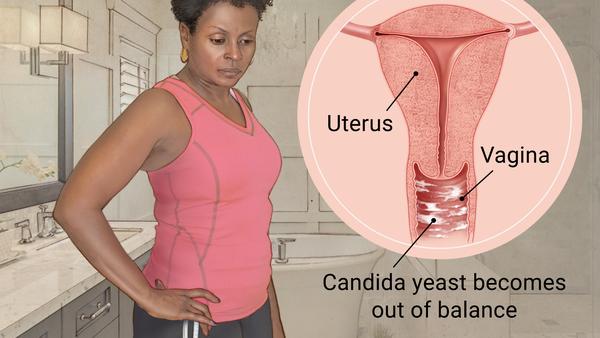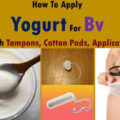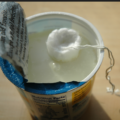According to the Center for Disease Control, Candidiasis is an infection caused by a yeast (a type of fungus) called Candida. Candida normally lives inside the body (in places such as the mouth, throat, gut, and vagina) and on skin without causing any problems. Sometimes Candida can multiply and cause an infection if the environment inside the vagina changes in a way that encourages its growth. Candidiasis in the vagina is commonly called a “vaginal yeast infection.” Other names for this infection are “vaginal candidiasis,” “vulvovaginal candidiasis,” or “candidal vaginitis”.
Candidiasis, are experienced by as many as 3 out of 4 women during their lifetime. Most women experience at least two infections. Frequent symptoms of vaginal yeast infection include itching, burning, and vaginal discharge.
Symptoms of a Candida infection include:
- Itching, burning, or irritation of the vagina or vulva, which is the tissue surrounding the vagina.
- Pain or soreness in the vagina or the vaginal opening
- Vaginal burning with intercourse or urination
- A thick, white, odorless discharge that resembles cottage cheese, or a watery discharge
- Rash
Causes of Candida infections
There are many reasons you could get a yeast infection, including:
Hormones: Changes during pregnancy, breast-feeding or menopause (or if you’re taking birth control pills) can change the balance in your vagina.
Diabetes: If your diabetes is not well-controlled, the increase in sugar in the mucus membranes (moist linings) of your vagina can create a place for yeast to grow.
Antibiotics: These drugs can kill off many of the good bacteria that live in your vagina.
Douches and vaginal sprays: The use of these products can change the balance in your vagina.
A weakened immune system: If you are HIV-positive or have another immune system disorder, the yeast may also grow uncontrolled.
Sex: Though a yeast infection is not considered a sexually transmitted infection, it can be passed from person to person through sexual contact.
Sometimes a more complicated yeast infection may occur, with more severe symptoms. Four or more infections may arise in one year. There may be severe redness, swelling, and itching, leading to skin fissures or sores. Medical conditions that can cause a complicated yeast infection include pregnancy, uncontrolled diabetes, having a weakened immune system, and the presence of an alternate Candida fungus, as opposed to Candida albicans. In men, it affects the head of the penis. Symptoms include redness, irritation, and discharge. It can also affect the skin or the mouth. Read:Can Chlamydia Treatment Cause Yeast infection
How Can I Get Rid Of Candida Infection Without Hurting Myself?
Finding the strongest candida killer that is also safe is key in getting rid of candida without hurting yourself. Furthermore, Candidiasis & candida overgrowth treatment needs to address the source of the infection, which is usually imbalances in the gut. In addition to removing toxic and inflammatory foods, an anti-Candida diet often focuses on increasing your intake of foods known to minimize the growth of Candida Albicans. According to a Naturopathic practitioner Dr Lana, The following foods have been listed as strongest Candida killers because they fight Candida overgrowth and restore balance to your system. These foods include;
Olive Oil: Olive, flax, avocado, and primrose oils contain polyphenols, which are antioxidants that can help your body fight Candida. Oleic acid, the primary fatty acid in olive and avocado oils, helps to fight inflammation and support your immune system.
Cloves: Cloves naturally contain eugenol, a powerful essential oil and the perfect addition to your anti-Candida diet. Eugenol is an extremely effective antifungal when taken internally. It almost completely inhibits the growth of Candida cells. In addition to being an antifungal food, clove oil can also be effective as a topical aid for fungal infections of the toenails and fingernails. SEE: How To Use Cloves To Treat Infection
Cinnamon: Is a spice that helps your body fight inflammation, and it also exhibits antifungal properties. Similar to caprylic acid, it appears to damage yeast cells, causing them to eventually die off. It may be beneficial to include in your anti-Candida diet as you work to incorporate foods that kill Candida.
Coconut oil: Is a great food to add to your anti-Candida diet because it naturally contains capric acid and lauric acid, which promote gut health. These antifungal fatty acids interfere with Candida growth and replication by poking holes in its cell wall, causing them to die off. Capric acid, otherwise known as caprylic acid, is fast and effective at eliminating Candida overgrowth. That’s why it’s the primary ingredient in one of my anti-Candida supplements, Caprylic Acid.
Garlic: Garlic and garlic extracts are not only used as cooking ingredients, they also serve as pharmaceuticals. In fact, garlic has a long history of being one of the strongest Candida killers. Garlic contains allicin, a compound with natural antifungal properties that inhibit the growth and reproduction of Candida cells. The best way to reap the benefits of garlic is to add the freshly crushed raw ingredient to your anti-Candida diet. SEE: Health Benefits Of Garlic For Women’s Health
Cruciferous vegetables: Such as broccoli, Brussels sprouts, arugula, cabbage, and radishes, are among the most powerful foods that kill Candida. They contain isothiocyanates, which are sulfur- and nitrogen-containing compounds that inhibit the growth of Candida. Their antibacterial properties also support a healthy balance of bacteria.
Apple cider vinegar: Is the one type of vinegar allowed on an anti-Candida diet. Most vinegar is made from alcohol or grains. Apple cider vinegar is sourced from apples or, more accurately, apple cider. Research indicates apple cider vinegar can damage the Candida cell walls and protein structures.
Ginger: Ginger contains gingerols and shogaols. These inflammation-fighting, antifungal components of the ginger root support a healthy balance of bacteria to help eliminate Candida overgrowth. Ginger is not the strongest Candida killer of the group however it does promote your glutathione levels, providing significant liver support while your body is detoxifying.
Wild-caught salmon: Is an excellent source of Omega-3 fatty acids, which may fight fungal infections. Additionally, Omega-3s can help increase the production of inflammation-fighting compounds, such as short-chain fatty acids. They also work together with your immune system to improve the integrity of your gut lining and repair any damage.
Lemon: Lemons are a well-known antifungal food that can kill Candida. Lemon’s main role in supporting your health is to help detoxify your liver as it works to kill Candida.
For the best candida cleanse results and to avoid common mistakes that can lead to side effects Candida specialist recommends:
Serving Size: Start with the lowest possible dosage of antifungals. Test your body’s response. Gradually increase the dosage if needed. Some people are more sensitive than others and may get great results with very low dosage. More is definitely not better in this case. Is some cases, antifungals are not even needed.
Root Cause: Find out what causes candida overgrowth in your body. Certain medication, antibiotics, high sugar diet, diabetes, low immune system, and chronic stress are common risk factors for candida overgrowth.
This is very important: You can take the strongest candida killer; as long as the cause of your candida overgrowth is not addressed, you won’t be able to completely heal.
Candida Diet: Avoid foods that can feed candida or weaken your immune system. This is far more important that eating antifungal foods.
Gut Health: Remember to support your gut health and immune system with a good source of probiotics, using strains that are effective and safe for candida. SEE: Does Xifaxan Kill Candida?
For recurrent yeast infections watch this video below





